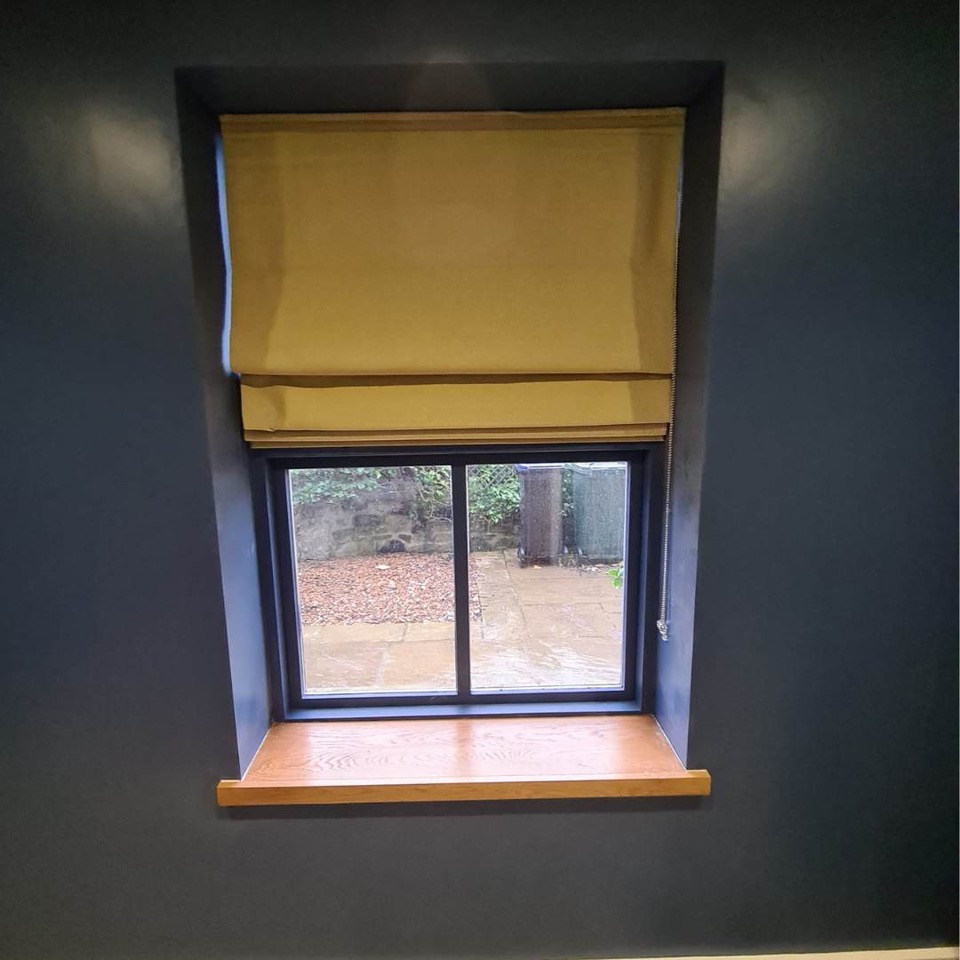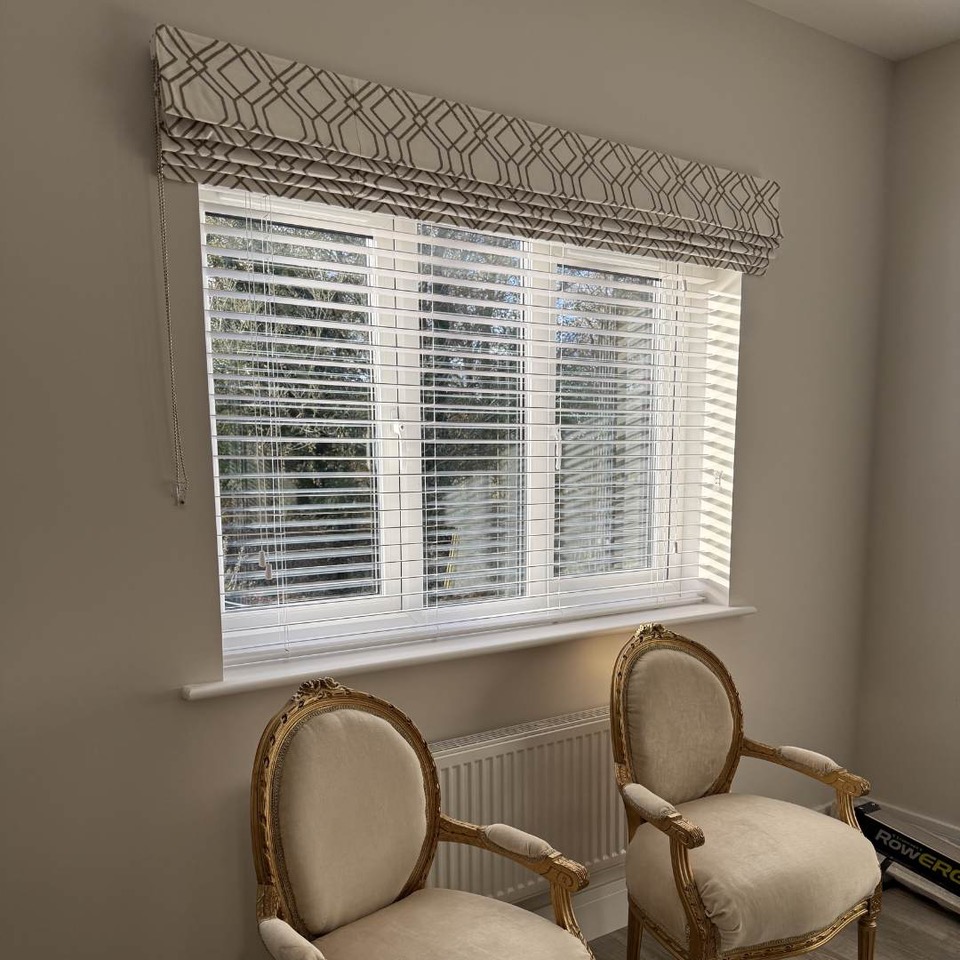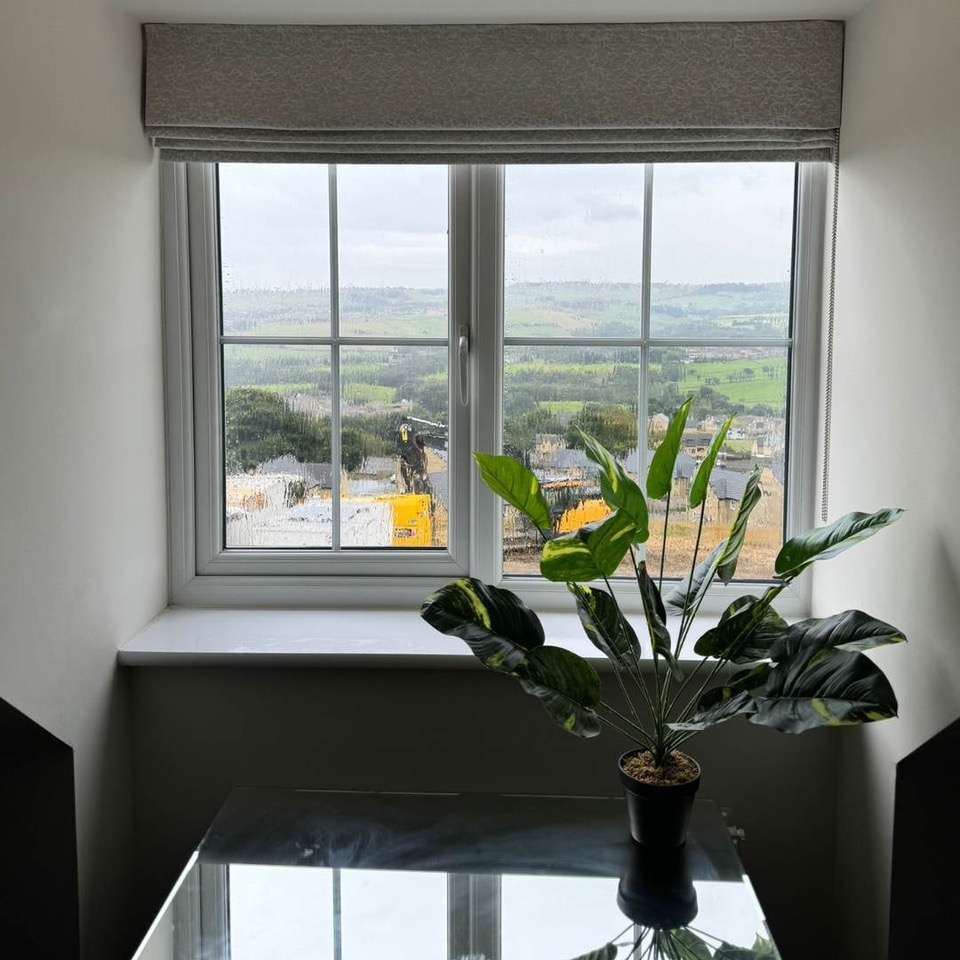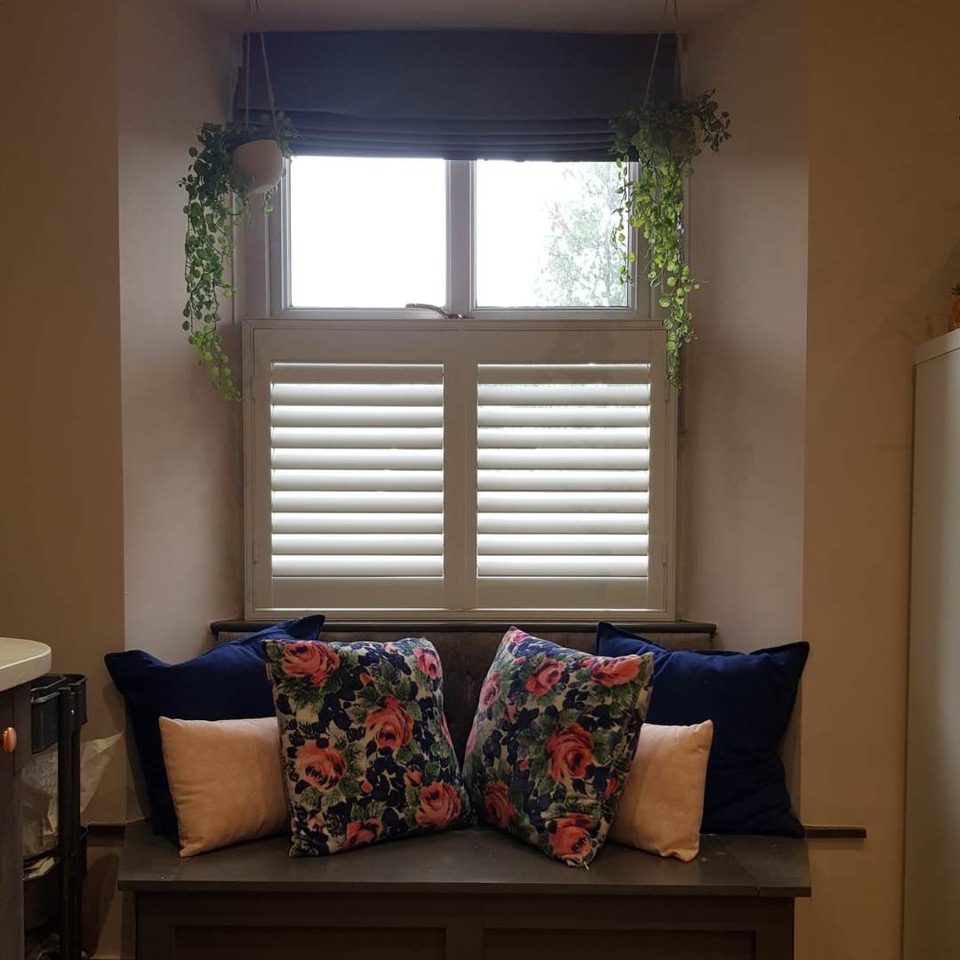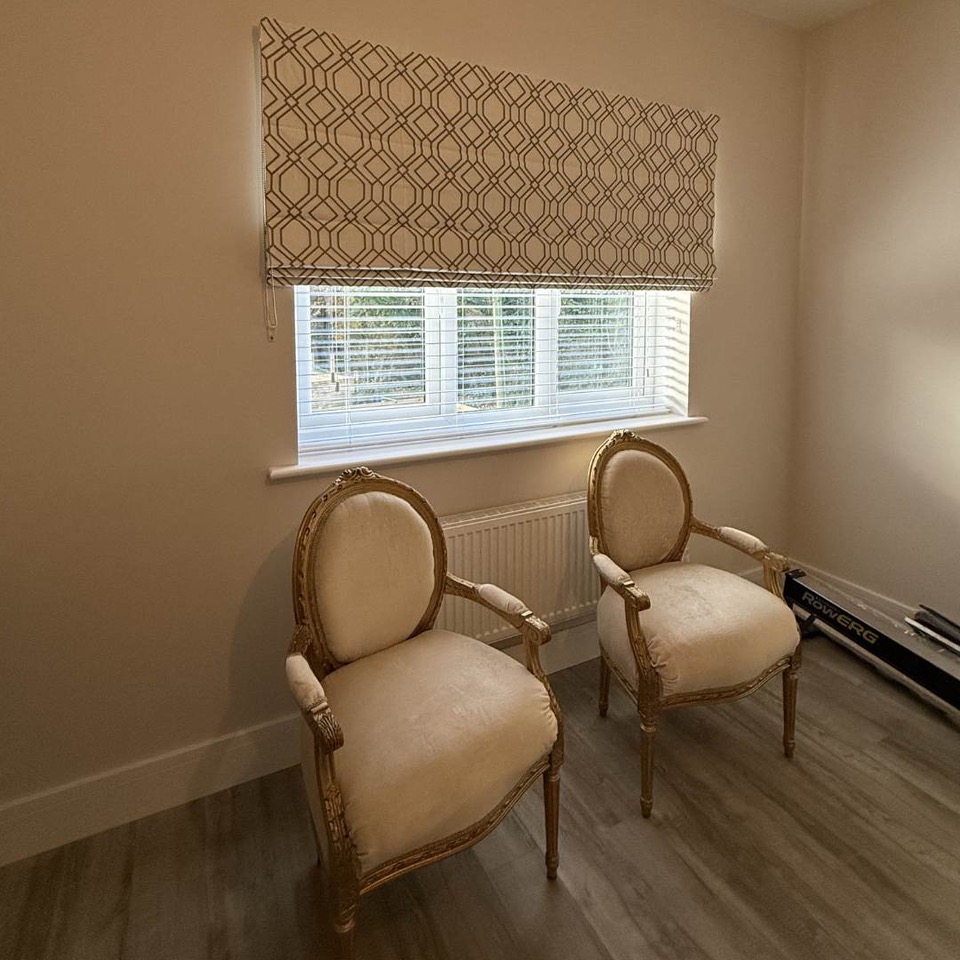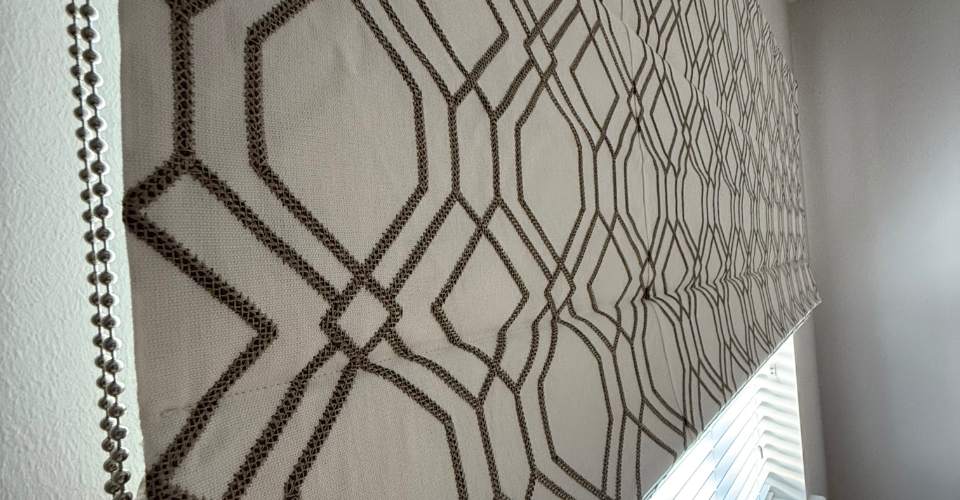Roman Blinds Inside vs. Outside Recess: Things to Consider
Roman blinds are a timeless choice for window treatments, offering a versatile and elegant touch to any room. With countless fabric options and linings, they seamlessly blend style with functionality, making them a favourite among homeowners, interior designers, and home decor enthusiasts alike. However, one critical decision to make when installing Roman blinds is whether to fit them inside the window recess or outside.
Each placement option has its own pros and cons, from aesthetics to light control and practicality. Here’s a breakdown of everything you need to consider before deciding where to position your Roman blinds.
Why Choose Roman Blinds?
Before we explore the specifics of placement, it’s worth highlighting what makes Roman blinds so popular. Roman blinds combine the softness of drapery with the clean lines of modern shades, making them ideal for both traditional and contemporary homes.
Key Benefits of Roman Blinds:
- Wide variety of fabric choices to match any decor.
- Options for light-filtering or blackout linings for better control of light and privacy.
- Compact and neat appearance when raised, making them an excellent complement to other decor elements.
Once you’ve decided on Roman blinds, the next big question is their placement—inside the recess or outside? Both options offer unique advantages depending on your room’s aesthetics and functional needs.
Inside Window Recess Placement
Fitting Roman blinds inside the window recess is a classic and streamlined approach. This option works well if you prefer a cleaner, minimalist look and are looking to maximize wall space around your windows.
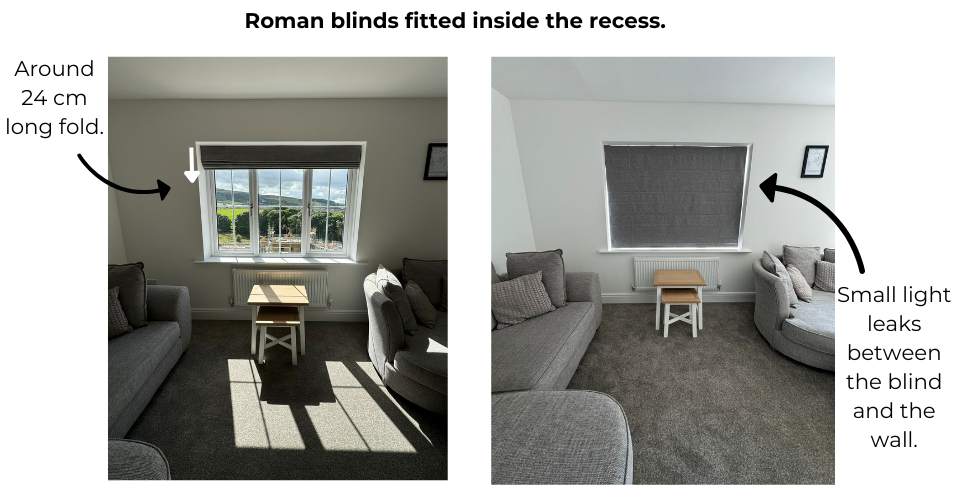
Advantages of Inside Recess Placement
- Better Light Blocking:
Placing the blinds inside the recess typically leaves smaller gaps between the fabric and the wall, resulting in better light control. This makes inside-recess placement an excellent choice for bedrooms or rooms where you prioritize darkness.
- Streamlined Appearance:
Inside-recess blinds sit flush within the window frame, offering a more tailored and elegant look. This design emphasizes the architectural features of your windows while being less obtrusive.
- Concealed Cord:
With the blinds positioned inside the recess, the operating cord often runs alongside the blind, making it less visible. This can give your window treatment a sleeker overall aesthetic.
Disadvantages of Inside Recess Placement
- Reduced Window Aperture:
When Roman blinds are raised, their folds can take up approximately 24 cm of the window space.
The length of the fold will depend on the length of the window; the taller the window, the longer the fold, which can impact the overall appearance and functionality of the blind.
This may make the window feel smaller and can limit the amount of natural light entering the room even when the blinds are open.
- Harder-to-Reach Cord:
The concealed cord is sometimes more challenging to access, especially if the recess is deep or tall. This can make operating the blinds slightly less convenient across certain window designs.
When to Choose Inside Recess Placement
Opt for inside-recess placement if your priority is light control, you want a clean and subtle look, or your room has decorative walls that you’d prefer to keep exposed.
Outside Window Recess Placement
Fitting Roman blinds outside the window recess is another popular option that offers more flexibility in design and functionality. This configuration works significantly well in spaces where you want the window area to remain fully visible when the blinds are open.
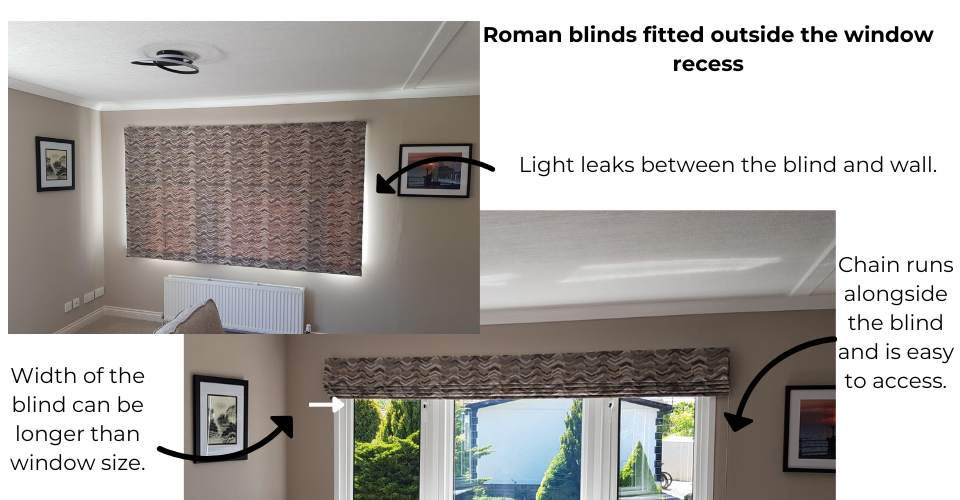
Advantages of Outside Recess Placement
- Maximised Window Exposure:
By installing blinds outside the recess, you can position the blinds slightly higher than the window’s frame. This setup allows the folded fabric at the top to sit completely outside the window area, ensuring maximum natural light when the blinds are raised.
- Easier Cord Accessibility:
With the blinds positioned outside the recess, the operating cord is more accessible. This can be particularly important for windows that are frequently adjusted throughout the day.
- Flexibility in Sizing:
Roman blinds placed outside the window recess can be made slightly wider than the window frame. This additional width can help better block outside light from entering through the sides and provide more privacy.
Disadvantages of Outside Recess Placement
- Potential Light Leaks:
Because there are gaps between the fabric and the wall when blinds are placed outside the recess, some light leakage is possible, even with blackout linings. This may not be ideal for rooms where total darkness is a priority.
- Less Minimalist Look:
While outside-recess blinds can be elegant, they don’t offer the same streamlined appearance as inside-recess options. They are more noticeable, as they project beyond the wall or window frame.
When to Choose Outside Recess Placement
Outside-recess placement is ideal if you desire maximum natural light exposure when the blinds are raised, have unusually shaped or shallow recesses, or prefer easy access to the operating cord.
Factors to Consider When Choosing Placement
Both inside and outside-recess placements have their merits, and the right choice depends on your room’s needs and personal preferences. Here are some final factors to help you decide:
- Size of the Window Recess:
If your window recess is shallow, fitting blinds inside may not be practical. Outside-recess placement will give you more flexibility.
- Room Functionality:
Think about the purpose of the room. For example, inside-recess placement may be better for bedrooms to block out light, while outside-recess placement could work well in a living room to create a more open feel.
- Decor Style:
Inside-recess placement suits minimalist interiors, while outside-recess placement can work well in rooms with bold or eclectic decor where you want the blinds to stand out as a feature.
- Ease of Use:
If easy access to the cord is a priority, outside-recess placement may be more practical. Alternatively choose motorised option.
The Importance of Lining
Light filtering lining may cause the fabric to change slightly in shade when sunlight passes through. If you have designed your window furnishings to match precisely with your walls or other pieces of furnishings, this effect might lead to an unintentional mismatch. To avoid this, you may want to consider blackout lining or thermal lining, which prevents the change of colour. These options not only maintain the intended aesthetic but can also provide added benefits such as improved energy efficiency and enhanced privacy.
Add Timeless Style to Your Home with made-to-measure Roman Blinds
Roman blinds are a versatile and elegant choice for any home. Whether you go for an inside or outside-recess placement, you’ll enjoy a stunning window treatment that balances style and function. By carefully evaluating your room’s needs, window characteristics, and personal preferences, you can make the right decision to elevate your home’s interior.
If you’re unsure about placement options or need help selecting the perfect Roman blinds for your space, reach out and we are always happy to help, especially when the kettle is on. With our help, you’ll find the ideal Roman blinds to bring your vision to life.
